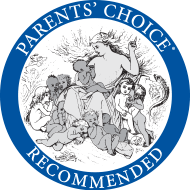Materials
- blue, red, and white paint
- paper
- 2 or 3 paper plates, a paintbrush with a small tip or a craft stick (for each child)
Key Science Concepts
Children identify, create, and compare colors. They’ll explore how:
- A single color can have different shades, from very light to very dark.
- Two or more colors can be combined to make a new color.
- Mixing colored paint with white paint makes a lighter shade of that color.
Vocabulary
Encourage children to use color names, as well as key terms such as color, paint, and shade; descriptive words such as light, lighter, dark, and darker; action words such as describe, paint, and mix; and science process words such as change, compare, observe, and predict.
Directions
Tell children that during the last two days, they mixed colors of water. Today, they will mix two colors of paint, red and blue. What color do they predict these two colors will make? Why do they predict that?
- Have children experiment with mixing blue and red paint. (Later, they can experiment with adding white.)
- Ask them what they noticed: How did you make that color? How much blue did you use? How much red? What other colors do you think you can make? Do you have any colors that are exactly the same? How are these two colors different?
Encourage children to share and post the “formula” for making a favorite color. Invite them to create a name for the color, the way they did last week for different skin tones.
Reflect and Share
Talk about what children observed and discovered while mixing colors of paint. Write their ideas on the chart, “Mixing New Colors.”

 Español
Español








